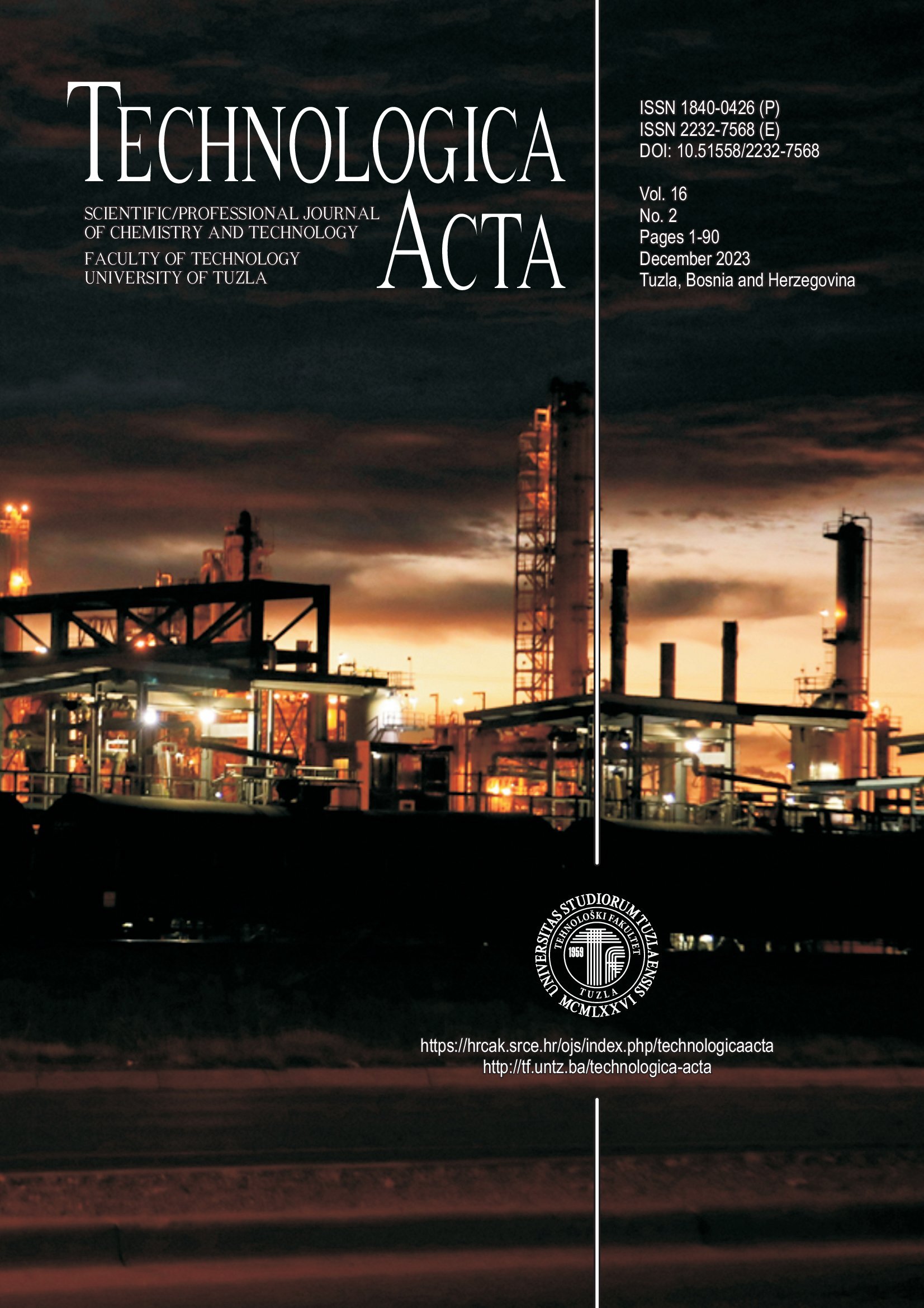Antimicrobial and cytotoxic activities of essential oil from the aerial parts of Pulicaria dysenterica (L.) Bernh. (Asteraceae)
Keywords:
Pulicaria dysenterica, essential oil, antimicrobial activity, citotoxicityAbstract
The chemical composition of Pulicaria dysenterica (L.) Bernh. aerial parts essential oil (EO), growing wild in Bosnia and Herzegovina, was presented in the study. Biological activities of the EO was included antimicrobial investigation and cytotoxicity. Antimicrobial activity was determined on selected ATCC strains of microogranisms while cytotoxicity was recorded on HeLa cell line. The aerial parts of P. dysenterica contained 0.3% of yellow, liquid, fragrant EO. The identified 51 constituents accounting for 81.09% of the oil. The EO was characterized by the presence of a high concentration of oxygenated sesquiterpenes 51.83% while oxygenated monoterpenes constituted 15.57%, sesquiterpene hydrocarbons 9.32% and non-terpene compounds presented 4.37% of EO. The dominant compounds were sesquiterpenes caryophyllene oxide, (E)-nerolidol, β-caryophyllene and monoterpene nerol. Antimicrobial activity of EO was tested against bacteria Staphylococcus aureus, Pseudomonas aeruginosa and Escherichia coli, as well as against fungus Candida albicans. Results indicated that all used the microorganisms were sensitive to the EO. It has observed promising results against bacteria Escherichia coli with MIC value 1 x 103 µg mL-1. The oil showed moderate cytotoxicity against HeLa cell line using MTT method with IC50 of 188.52 μg mL-1. These results support traditional use EO in the treatment of diarrhea and dysentery and as insecticide.
Downloads
Published
Issue
Section
License
Copyright (c) 2024 Ermina Cilović Kozarević, Esmeralda Dautović, Dalila Halilčević, Lamija Kolarević, Broza Šarić-Kundalić, Enida Karić, Aida Smajlagić, Darja Husejnagić, Emir Horozić, Jasmina Glamočlija, Marina Soković, Jelena Arsenijević, Zoran Maksimović

This work is licensed under a Creative Commons Attribution 4.0 International License.


